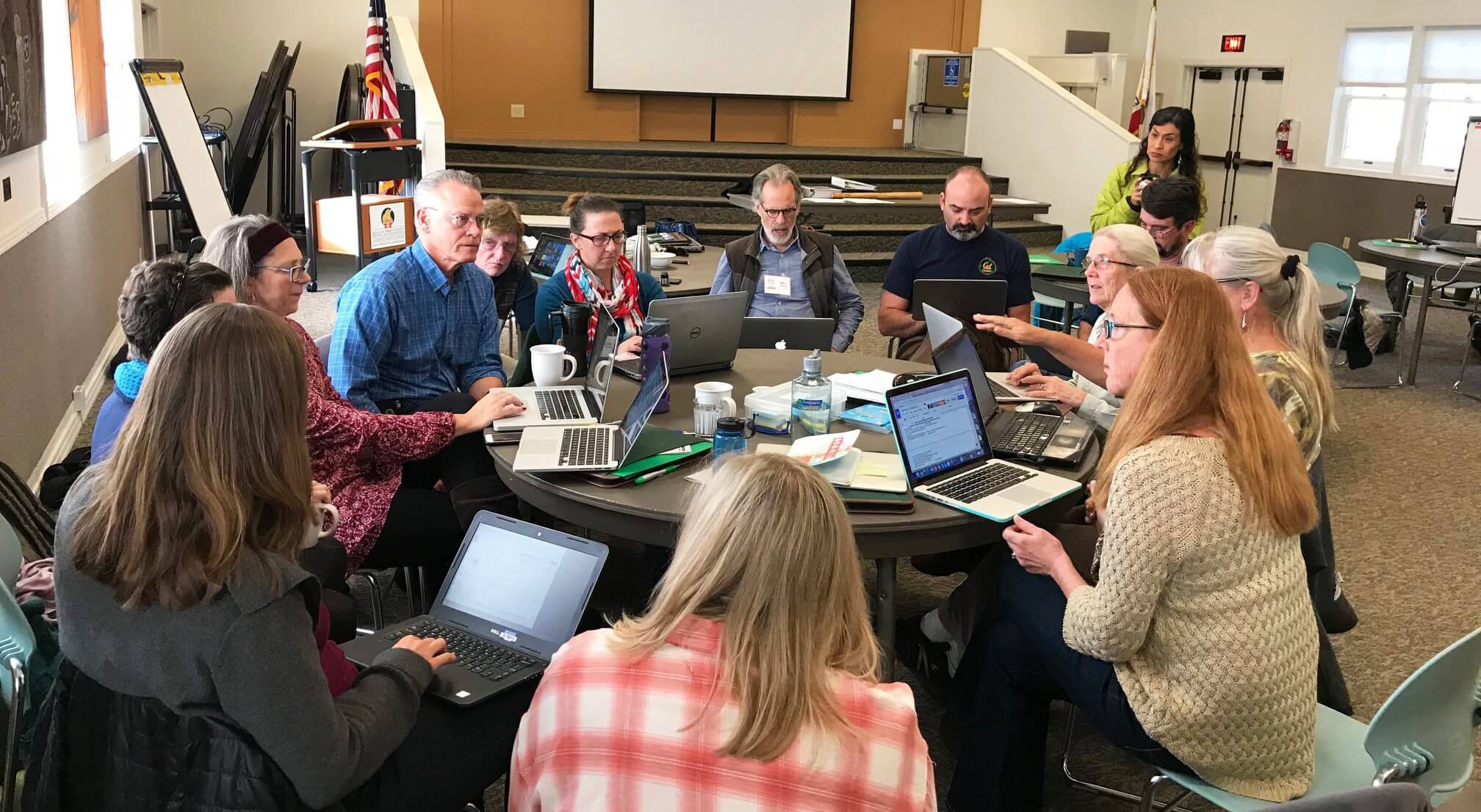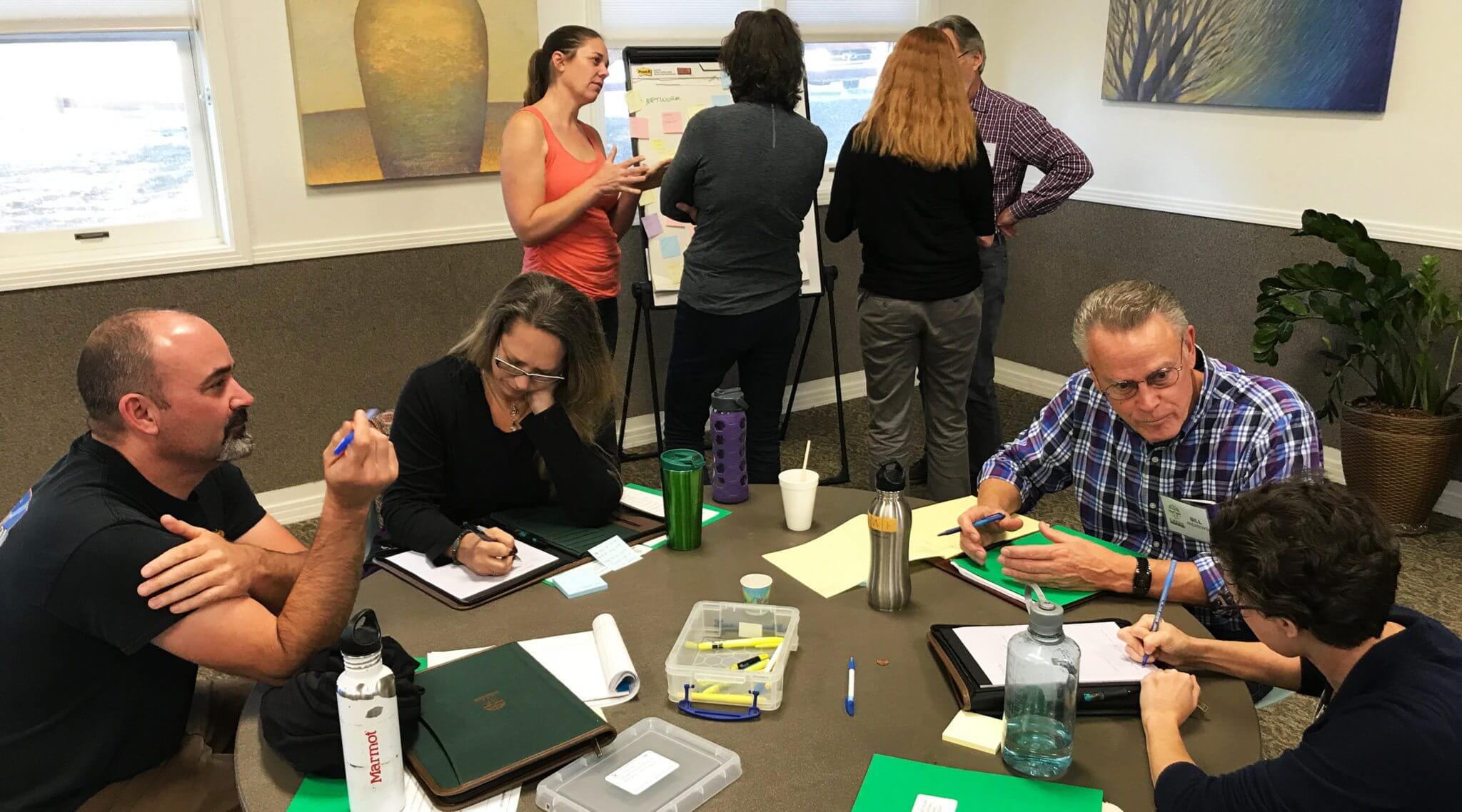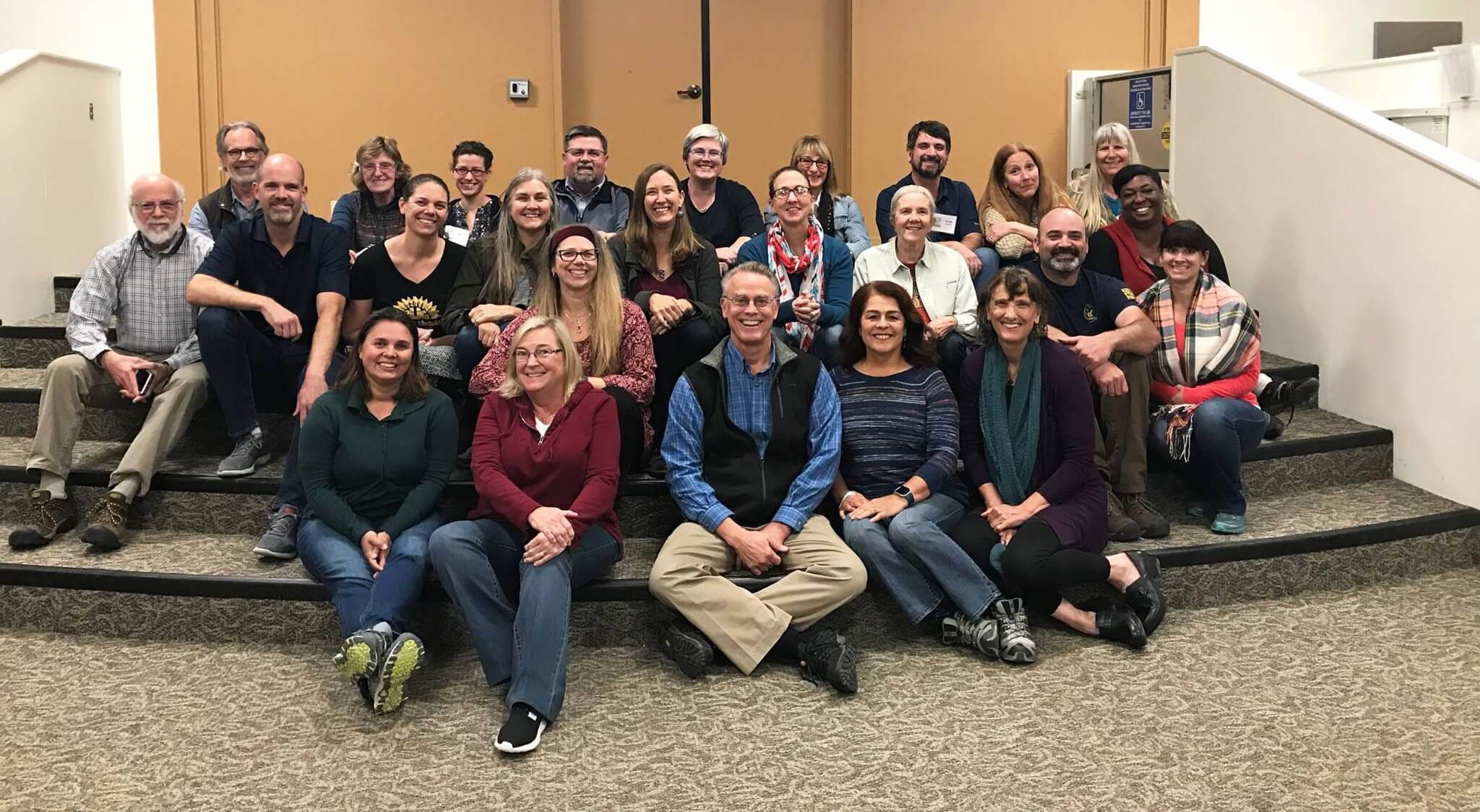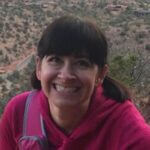The first weekend of December marked a high-point in my work as a California Regional Environmental Education Community (CREEC) coordinator. Thanks to the support of Ten Strands and the Leonardo DiCaprio Foundation, I attended my first CREEC Professional Learning Conference at San Luis Obispo’s Rancho El Chorro Conference & Retreat Center. During the time we have spent this last year re-envisioning the work we do to achieve environmental literacy throughout California, I have been wondering what that means in the context of the on-the-ground work we coordinators do in our respective regions. This was my first opportunity to meet the amazing women and men who support environmental literacy in California since I began as a CREEC coordinator five years ago. We have spoken on the phone and exchanged lots of emails, but seeing the faces of my peers and the facilitators of our work turned out to be an inspirational experience.
The weekend began by establishing a community-wide understanding of the language we use when working with formal and nonformal educators. Coming to common ground on what we mean when discussing diversity, equity, frameworks, and even science allowed our coordinators to better understand each other as we worked throughout the weekend to build capacity for our regions. Knowing that we will be communicating the same message while supporting our providers strengthens the CREEC Network as a whole while we grow support for environmental literacy.
We also shared and celebrated the successes that coordinators have had in the last year. Regional coordinators gave presentations about community-wide events they hosted, including the Farm to School Tri-County Summit in Region 8 (which brings together educators in San Luis Obispo, Santa Barbara, and Ventura counties) and the Dinner With A Scientist events happening in Tuolumne, San Joaquin, and Amador counties. Regions have spent the last year focused on building capacity with the Next Generation Science Standards (NGSS) through network meetings, such as those in Los Angeles and Santa Cruz counties, and through provider trainings in the Sacramento and Fresno areas. Regions 4 and 10 have been expanding teacher-focused environmental literacy trainings. Hearing about the extensive high-quality work for environmental literacy that has been happening across the state gave me a sense of excitement for all that CREEC is doing, and can do, along with an urgency to grow my own work in San Diego and Imperial counties. Having time to speak with other coordinators about their successes and challenges related to the work they are doing created a feeling of connection to the CREEC Network as a whole that I have needed in the five years that I have been a coordinator.
There was an underlying excitement to the entire weekend as we explored using environmental literacy as a lens to ensure equity for students by providing local experiences that serve as foundational phenomenon for students to think about science, advocate for their communities, and build understanding of the natural world. We dissected the three dimensions of the NGSS with a focus on inclusion, and built a tool we can use when working with providers and teachers in our regions. This will help us to clearly explain the ties between environmental literacy and the Science and Engineering Practices and Crosscutting Concepts, and support all students in accessing environmental education. These steps taken by our Network will help us move the entire state forward toward achieving environmental literacy.
We rounded-out the weekend with a focus on the History–Social Science (H–SS) Framework. I knew going into the weekend that the Environmental Principles and Concepts (EP&Cs) are included in H–SS Framework in a way similar to the new Science Framework. However, as a science teacher I have been at a loss in terms of how to support formal and nonformal educators to increase the presence of environmental literacy in programs and subject areas. Stacy Greer, from the California History–Social Science Project, gave an excellent presentation on the new H–SS Framework. It was inspiring and educational to hear about the changes being made in H–SS instruction. The shift to an added focus on literacy, inquiry, and citizenship alongside content offers the opportunity to use the environment as a lens for students as they delve into the decision-making process in our country—including interactions between humans and the environment they live in, and how we change the environment we rely on to keep our communities thriving.
At the heart of CREEC is the idea that we are a network. This weekend gave me my first experience of truly being a part of a statewide community. After three days of learning and sharing, I feel excited and empowered to go forward and grow the regional network of San Diego and Imperial counties and add to the flourishing of our California Regional Environmental Education Community Network as a whole!




